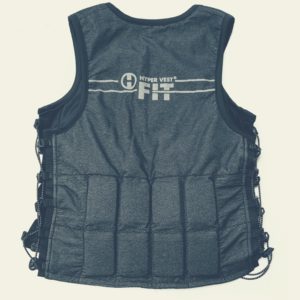We all remember being a kid and being able to pick up a random game of sports. Those days don’t have to be behind you.
However, it’s essential to keep yourself safe from full-contact sports.
Contact Sports
Full-contact sports let you exert physical impact on your opponents, provided you follow the rules that govern such contact.
Generally speaking, you can categorize these sports into “combat sports” and “contact action sports.”
In the former, you use tackling, grappling, kicking, and striking techniques to achieve victory. In the latter, physical contact is a secondary effect of attaining your goals, such as in water polo, ice hockey, or football.
Though there’s evidence of full-contact sports as far back as ancient times, the history of modern games started in the 1800s.
Soccer and amateur boxing became popular past times. Since then, they’ve become Olympic competitions with hundreds of millions of diehard fans.
Today, the most popular contact sport is soccer, played in over 200 countries by more than 250 million people.
Boxing
Another widely popular full-contact sport is boxing, in which two boxers get into a ring and fight for a pre-determined period.
The fighters can only use specific hand moves (uppercut, hook, cross, and jab), stances (full crouch, semi-crouch, and upright), and blocking techniques. You have 12 rounds to achieve victory.
Fist-fighting competitions originated in 17th century Europe, and standardized rules arrived in the early 20th century.
These rules define weight classes, the size of the boxing ring, and protective gear you must wear to fight in a sanctioned match.
Today, we divide modern boxing into amateur and professional categories.
Amateur boxing became famous when it became an Olympic sport in 1908, pushing fighters to develop the professional leagues that you know if you watch the match on TV.
Amateur rings are still more prevalent in countries like Cuba and Russia.
It’s safe to say the history of boxing covers really spans all of mankind. Even in prehistoric times, amateur boxing was popular with the ancient Greeks.
With the structure of international rules and regulations, boxing transformed into a robust sport practiced globally.
Hockey
Also known as a collision sport, hockey is a fast-paced sport with full contact. In this sport, two teams face each other, striving to drive a small puck into the opposite goal using wooden hockey sticks.
Players pass the puck between each other to help them traverse the rink without losing control of the puck.
There are actually two types of hockey. Most people think of ice hockey when they hear the term, but field hockey doesn’t use an ice rink.
Few countries popularized both types, so the word can mean different things to different people.
The origins of hockey and similar sports that use sticks date as far back as ancient Egypt. Today’s form of hockey coalesced sometime during the 19th century.
During this period, the majority of hockey rules and regulations were formed by government organizations that oversaw their establishment.
Beyond ice and field hockey, there are other forms of full-contact hockey. Most notably, you can play bandy hockey, quad hockey, roller hockey, and street hockey.
In all cases, you should wear protective gear to prevent injury to your head, elbows, knees, or shins.
Professional players rely on armored chest protection to stay safe from hard collisions.
Lacrosse
Though lacrosse is technically a limited-contact sport, it still poses a risk for injury. In this sport, two teams use lacrosse sticks and a single ball to win a points-based game.
Lacrosse players try to catch and carry a ball using the net of their lacrosse sticks. Like with other sports, they traverse the field, passing the ball to their teammates and eventually shooting it into the goal.
You can play lacrosse indoors on a court or outdoors in a field. Either way, it’s a fast and energetic sport that engenders a situation where players can crash into each other and get injured.
They can get hit hard by the stick and drop down instantly.
There are four variations in the rules governing lacrosse. Two of these variations require protective gear on the eyes, elbows, shoulders, and hands.
Goalies also usually wear more protection since they protect the goal you’re shooting the ball into.
Additionally, men’s lacrosse permits contact with both bodies and sticks, but women’s lacrosse matches only allow strikes with sticks.
CTE: A Hidden Risk of Contact Sports
If you’ve ever played contact sports, chances are you’ve heard of chronic traumatic encephalopathy (CTE).
This condition occurs when someone receives several head injuries over the course of their life, resulting in an ongoing loss of memory and other skills.
Athletes failing to protect their skulls with proper gear is a significant cause for brain injury in athletes.
When we play sports, we tend to focus on winning instead of the risk of injury. Playing a physical game like hockey, boxing, or football has links to CTE.
When the brain strikes the skull in force, tau proteins in your head can start to malfunction. The fault disrupts regular communication between your body’s cells.
Fortunately, you can protect yourself by reducing how many head injuries you suffer.
Wearing proper protection, allowing an adequate amount of time to recover after an injury, and waiting for medical clearance before returning to sports all give you a favorable chance at minimizing the risk of CTE.
What is CTE?
Have you ever accidentally hit your head while playing a sport, whether you hit the ground or another player?
In the short-term, you might have had a headache or even experienced a brief ringing pain, but that’s nothing compared to the long-term effects of repetitive injuries.
Contact sports can damage the human brain in more ways than expected, even when the initial symptoms go away.
A single injury to the head is known as a traumatic brain injury. This event caused damage to your brain, whether it was an accident while playing sports or from another physical trauma.
In all cases, the body responds in different ways, depending on how bad the damage is. Over time, repeated brain injuries run you a higher risk of developing Chronic Traumatic Encephalopathy (CTE).
Let’s break down the term. “Chronic” means long-lasting, and “traumatic” means intense. The “E” refers to anything that changes brain function or its structure. Severe hits might damage both sides of the brain.
In sports like football, players regularly collide with each other on nearly every play. Soccer also naturally facilitates lots of head contact, especially when another player slide-tackles you to steal the ball.
Not to mention that regularly hitting a ball with your forehead could eventually knock you out. If you’re a boxer, your opponent will inevitably strike you in the head at least once.
Some sports pose less of a risk for brain injury, like basketball or tennis. For full-contact games, there is always protective gear.
The intensity of each hit impacts how quickly the brain starts suffering long-term issues. CTE can develop from a single substantial strike or several smaller hits over a few years.
Other factors also influence how quickly CTE develops, including diet, alcohol and drug use, and genes.
How to Tell if You Have CTE
It’s difficult to diagnose CTE compared to other diseases of the brain. To narrow down the process, doctors begin with MRI and CT scans to look at your brain.
Unfortunately, these scans alone won’t reveal evidence of CTE.
Doctors can predict CTE in some patients. For example, if someone has played full-contact sports for over 10 years and suddenly develops a different personality or expressing strange emotions, like depression or suicidal behavior, there’s a good indication CTE is to blame.
In most cases, scientists must identify the disease after death, because the only way to know for sure is to look for tau clusters within the brain to make a diagnosis.
A decreased brain size and degraded structures in the brain can reveal that someone suffered from CTE.
Many CTE symptoms are the same as those exhibited by people who live with Alzheimer’s disease and other memory-related conditions.
Scientists continue to look for new and improved ways to diagnose CTE in living patients so doctors can provide proper treatment earlier.
Currently, researchers are looking at several methods, but positron emission tomography (PET) is one of the most promising practices so far.
It’s a brain-scanning technique that relies on a radioactive substance in the veins to illuminate an image of the brain.
Specifically, the material can highlight visible problems in the brain tissue. PET researchers hope to discover a radioactive substance that can detect and illuminate issues within the tau proteins.
Another means of diagnosing CTE requires examining broken-down tau in body fluids, including cerebrospinal fluid (CSF), urine, saliva, mucus, and blood.
Scientists use CSF to study tauopathies. If tau is present in these fluids, it could be evidence of CTE.
Immediate symptoms of a brain injury after hitting your head on something include:
- Loss of consciousness
- Feeling dizzy
- Blurry vision
- Severe headaches
- Nausea/vomiting
- Difficulty sleeping
- Loud ringing in your ears
- Trouble speaking
- Strange taste in the mouth
Can You Treat CTE?
Currently, there is no reliable method of treatment for CTE. It is a long-term, progressive, harmful disease.
Researchers still hope to find brain biomarkers that can help them detect the disease early on, which may decrease the likelihood of developing it.
Preventing CTE and Staying Safe with Contact Sports

Because there is no cure or reliable treatment for CTE, the best way to stop yourself from suffering from its effects is to protect yourself.
Body pads and headgear are the most common examples of ways to reduce head injuries when playing sports.
They’re not perfect methods that entirely prevent traumatic brain injury, but they do mitigate and absorb the shock of impact.
Of course, there are other ways to protect yourself when playing a full-contact sport.
Put on That Protective Gear
It’s so important that it bears repeating. Make sure you always wear the right equipment for your sport before going to the court or onto the field.
This might include a helmet, pads, chest protection, shinguards, and a mouthguard. If you need to wear glasses when you play, be sure to only wear glasses with non-shattering lenses.
Otherwise, you run the risk of an eye injury.
Play by The Rules
The rules are there as much for your protection as they are to regulate the game.
Dangerous practices like body checking in ice hockey or sliding headfirst in baseball are prohibited practices for a reason; you can easily injure your spine or brain.
Maintain a Safe Playing Field
Before every game, make sure there is no debris on the field or court.
Likewise, make sure there are no holes or other hazards strewed about. If the game takes place at night, make sure there is plenty of light so all players can see what they’re doing.
Don’t Overdo It
Even though you’re playing a game, it’s good to take breaks to reduce the risk of an injury from overusing your muscles.
Overuse injuries include fractures and small muscle tears. It’s also a good idea to take a break from your sport for a few weeks each year, especially if it’s an intense one.
Remember The Overall Health
Some conditions like bleeding disorders and irregular heart rhythms may make you a bad candidate for contact sports.
It’s a good idea to go to the doctor for a physical before a new season starts; your doctor can rule out any disqualifying conditions that might limit your ability to continue playing.
Don’t Forget to Warm Up
You should always stretch your muscles before and after each match. This is important to keep your tendons and muscles ready and flexible.
You may also consider a conditioning program to improve your strength because stronger muscles are more likely to help you walk away unscathed.
Avoid Hot-Weather Injury
Especially during the summer, playing sports outdoors can quickly dehydrate a player. Stay hydrated and drink plenty of water before, during, and after every match.
During extremely humid conditions, you might consider postponing a match.
Group Kids by Size
If you’re setting up full-contact sports for the kids, be sure to group them by size. It’s easier to injure someone who is only half your size.
Besides size, you should try to arrange by skill level instead of age. If you can’t, it’s best to adjust the game to benefit smaller players and beginners.
Recognize Injury
It’s always best to treat an injury before it gets worse. Knowing when you’ve been injured signals that you should stop before it leads to permanent damage.
Seek immediate treatment if you experience severe pain or swelling or can’t put your weight on one of your legs. Never try to ignore the pain to finish the match.
Summary
Even with preventative measures, it’s still possible to experience an injury when engaged in contact sports.
Take care of yourself and seek immediate treatment if you injure yourself playing a full-contact sport.



